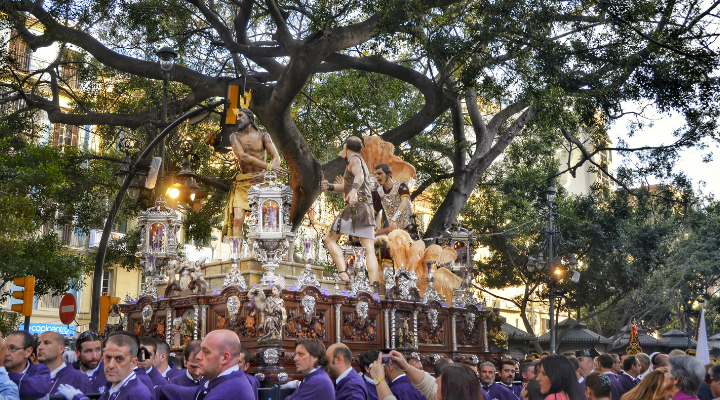
The The celebration of the Lord's Passover is undoubtedly the most important feast of the liturgical year. Hence, when in the second century the Church began to celebrate annually the paschal mystery of Christ, she realized the need for an adequate preparation, by means of prayer and fasting, according to the way prescribed by the Lord. Thus arose the pious custom of infra-paschal fasting on Good Friday and Holy Saturday, in preparation for Easter Sunday.
Step by step, through a sedimentation process, this period of paschal preparation was consolidated until it became the liturgical reality we know today. as a Lenten Season.
The demands of the catechumenate and penitential discipline for the reconciliation of penitents undoubtedly also played a role.
The primitive celebration of the Passover of the Lord knew the practice of a preparatory fast on the Friday and Saturday prior to this commemoration.
This practice could be alluded to by the Traditio ApostolicaThe first part of the document of the beginning of the third century, when it demands that the candidates for baptism fast on Friday and spend Saturday night awake.
On the other hand, in the third century, the Church of Alexandria, with deep and mutual relations with the Roman See, lived a week of fasting prior to the Paschal feasts.
Spanish Lenten Procession
In any case, as in other areas of the life of the Church, we have to wait until the fourth century to find the first glimpses of an organic structure for this liturgical season. However, while at this time the institution of the forty-day Lent was already consolidated in almost all the Churches, the period of Easter preparation was limited in Rome to three weeks of daily fasting, except Saturdays and Sundays. This three-week pre-Easter fasting remained in force for a short time, because at the end of the fourth century, the city already knew the Lenten structure of forty days.
The six-week Lenten period was probably linked to penitential practice: penitents began their most intense preparation on the sixth Sunday before Easter and underwent a prolonged fast until the day of reconciliation, which took place during the Eucharistic assembly on Holy Thursday. Since this period of penance lasted forty days, it was called Quadragesima or Lent.
During the first stage of Lenten organization, only Sunday Eucharistic meetings were held, although during the week there were non-Eucharistic assemblies on Wednesdays and Fridays.
But by the end of the 6th century the Monday, Wednesday and Friday meetings already celebrated the Eucharist. Later, new Eucharistic assemblies were added on Tuesdays and Saturdays. Finally, the process was closed under the pontificate of Gregory II (715-731), with the assignment of a Eucharistic form for the Thursdays of Lent.
The theological meaning of Lent is very rich. Its quarantine structure entails a peculiar doctrinal approach.
In fact, when fasting was limited to two days - or a week at the most - this liturgical practice could be justified simply by the sadness of the Church in the absence of the Bridegroom, or by the climate of anxious expectation; while the Lenten fast assumes from the beginning some connotations of its own, imposed by the symbolic meaning of the number forty.
First of all, it should not be overlooked that the entire Western tradition begins Lent with the reading of the Gospel of the temptations of Jesus in the desert: the Lenten period thus constitutes a desert experience, which, as in the case of the Lord, lasts for forty days.
During Lent, the Church lives an intense spiritual battle, as a time of fasting and testing. This is also evidenced by the forty years of pilgrimage of the people of Israel through Sinai.
Other symbolisms enrich the number forty, as can be seen in the Old and New Testament. Thus, the quarantine evokes the idea of preparation: forty days of Moses and Elijah prior to the encounter with Yahweh; forty days used by Jonah to attain penance and forgiveness; forty days of fasting of Jesus before the beginning of his public ministry. Lent is a period of preparation for the celebration of the Easter solemnities: Christian initiation and reconciliation of penitents.
Finally, the Christian tradition has also interpreted the number forty as an expression of the present time of life, a foretaste of the future world. The Second Vatican Council (cfr. SC 109) pointed out that Lent has a double dimension, baptismal and penitential, and emphasized its character of time of preparation for Easter in an atmosphere of attentive listening to the Word of God and unceasing prayer.
The Lenten season concludes on Holy Thursday morning with the Mass chrismalis -Missa Chrismalis- which the bishop concelebrates with his presbyters. This Mass manifests the communion of the bishop and his priests in the one and identical priesthood and ministry of Christ. During the celebration, the holy oils are blessed and chrism is consecrated.
The season of Lent extends from Ash Wednesday until the Mass of the Lord's Supper exclusively. Ash Wednesday is a day of fasting and abstinence; on Fridays of Lent, abstinence from meat is observed.. On Good Friday, fasting and abstinence are also lived.
Mr. Francisco Varo Pineda
Research Director
University of Navarra
Faculty of Theology
Professor of Sacred Scripture